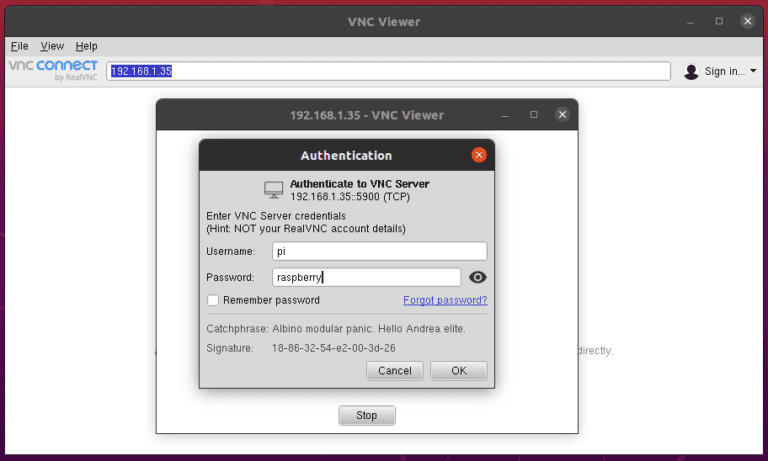

- #Manjaro tigervnc 1080p
- #Manjaro tigervnc install
- #Manjaro tigervnc password
- #Manjaro tigervnc download
- #Manjaro tigervnc free
usr/bin/ld: cfb16/libcfb.a(cfballpriv.o):(.bss+0x4): multiple definition of `cfbGCPrivateIndex' cfb/libcfb.a(cfballpriv.o):(.bss+0x0): first defined here => ERROR: A failure occurred in build().įor me building fails with: /usr/bin/ld: cfb16/libcfb.a(cfballpriv.o):(.bss+0x8): multiple definition of `cfbWindowPrivateIndex' cfb/libcfb.a(cfballpriv.o):(.bss+0x4): first defined here Make: Leaving directory '/var/tmp/pamac-build-user/tightvnc/src/vnc_unixsrc/Xvnc/programs' Make: Leaving directory '/var/tmp/pamac-build-user/tightvnc/src/vnc_unixsrc/Xvnc/programs/Xserver' Make: Leaving directory '/var/tmp/pamac-build-user/tightvnc/src/vnc_unixsrc/Xvnc/programs/Xserver/dix' usr/include/features.h:194:3: warning: #warning "_BSD_SOURCE and _SVID_SOURCE are deprecated, use _DEFAULT_SOURCE" ġ94 | # warning "_BSD_SOURCE and _SVID_SOURCE are deprecated, use _DEFAULT_SOURCE"Īr clq libdix.a atom.o colormap.o cursor.o devices.o dispatch.o dixutils.o events.o extension.o gc.o globals.o glyphcurs.o grabs.o main.o property.o resource.o swaprep.o swapreq.o tables.o window.o initatoms.o dixfonts.o privates.o pixmap.o Let clients connect via TCP direct mode rather than UDP direct mode.Does not build on Arch: $ pamac build tightvnc
#Manjaro tigervnc free
Please note - This free Raspberry Pi edition of RealVnc Server will Use with Raspberry Pi’s however if it doesn’t show a valid licenseĪfter installation, you will need a valid realvnc key to activateĭon’t forget to enable the systemd service: sudo systemctl enableĪnd thats it! A working 64bit RealVNC server running on Manjaro OR git clone this package to compile manually:įYI: This should be pre-activated as the source is pre-activated for
#Manjaro tigervnc download
You can use the precompiled package in my Releases page to download & So please perform the following command to ensure all prerequists forīuilding the package are met: pacman -S base-devel
#Manjaro tigervnc install
ForĮxample, a default install of Manjaro Arch ARM64 only has someĬomponents of base-devel installed by default on a fresh installation Make sure you have the package base-devel installed fully. Has also been tried on XFCE, MATE & KDE Plasma Has been tested on all flavours of Manajaro ARM64 flavours using a 8gb Manjaro ArchLinux based ARM64 installation on a Raspberry Pi4. This AUR package will install RealVNC Server aarch64 package on any RealVNC Server for Raspberry Pi4 64bit Manjaro AARCH64 Reference resources : Raspberry pie profile config.txt Detailed introduction 6.vnc If not, Reference resources :
#Manjaro tigervnc 1080p
Hdmi_mode=82 Set in the CEA or DMT The screen resolution in this format is 1080p 60Hz Hdmi_group=2 Set up HDMI The type is DMT, No group specified, Or set to 0, Will use EDID Preferred group for reporting. Is not detected HDMI The monitor should also use HDMI Pattern Hdmi_force_hotplug=1 Disguised as a HDMI Hot swap signal detected, appear HDMI The display is plugged in Even if. Solve :/boot/config.txt The following contents are added to the document : hdmi_force_hotplug = 1 hdmi_group = 2 hdmi_mode = 82

The next day, I encountered new problems : Don't turn it on without connecting the display screen
#Manjaro tigervnc password
Solve : Right click in the lower right corner wifi Icon, Configure network connections ,WIFI Security, Enter the password and save it. Problem 2., solve the problem 1 after, restart ,wifi Password prompt re-enter, Which line to enter every time you start up. Solve : The lower left corner, Search for, kwalletmanager, If not, go to the system store to install, After open the kwalletmanager Change the password to be consistent with the system password, Second, turn on KDE wallet, Cancel “ Enable KDE Qianbao subsystem ”. I've set up automatic login after startup ( System settings -> Powering on -> Behavior setting )īoot will still prompt for “KDE Wallet service ” password, Enter the system password, Otherwise vnc Out-of-service. But at the beginning, I met 2 A question : If the operation is correct, It will be displayed as active(running) state. The first is to set the startup VNC, The second is to start VNC service, The third is to check VNC The state of. Configure three items : sudo systemctl enable rvice If not, Use this command : pacman -U .zstĪfter that, the installation is successful 3. zst, Double click should be able to install ( I opened it directly in the browser this time ) Manjaro The packaging format of the system is recognized. Stay manjaro Click the link above to download 2. I'm really raspberry pie 4B 8G Installed on version Manjaro After all kinds of attempts in two or three hours, Finally succeed, Now record the process, So as not to forget next time


 0 kommentar(er)
0 kommentar(er)
